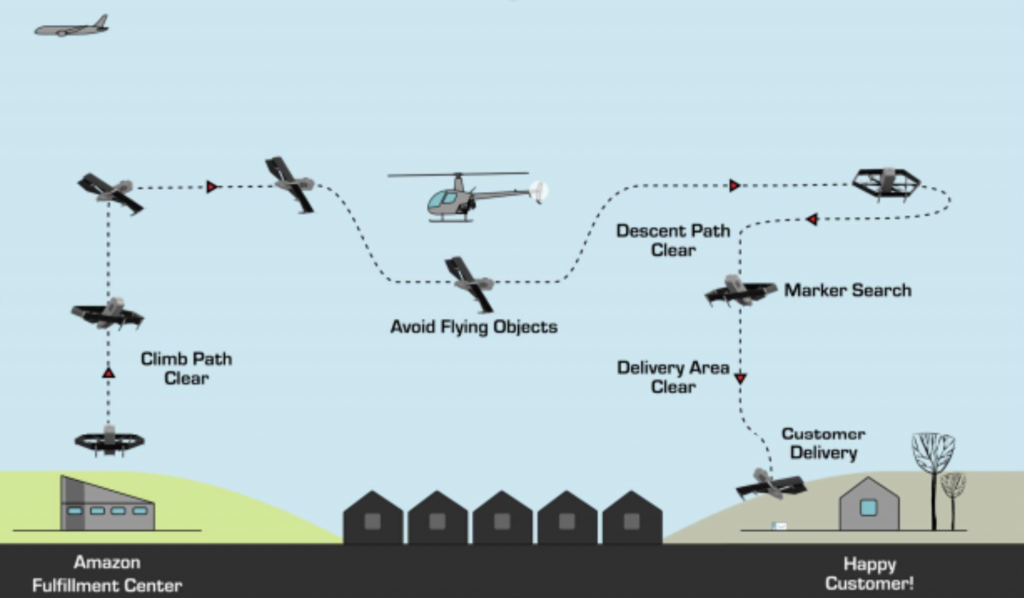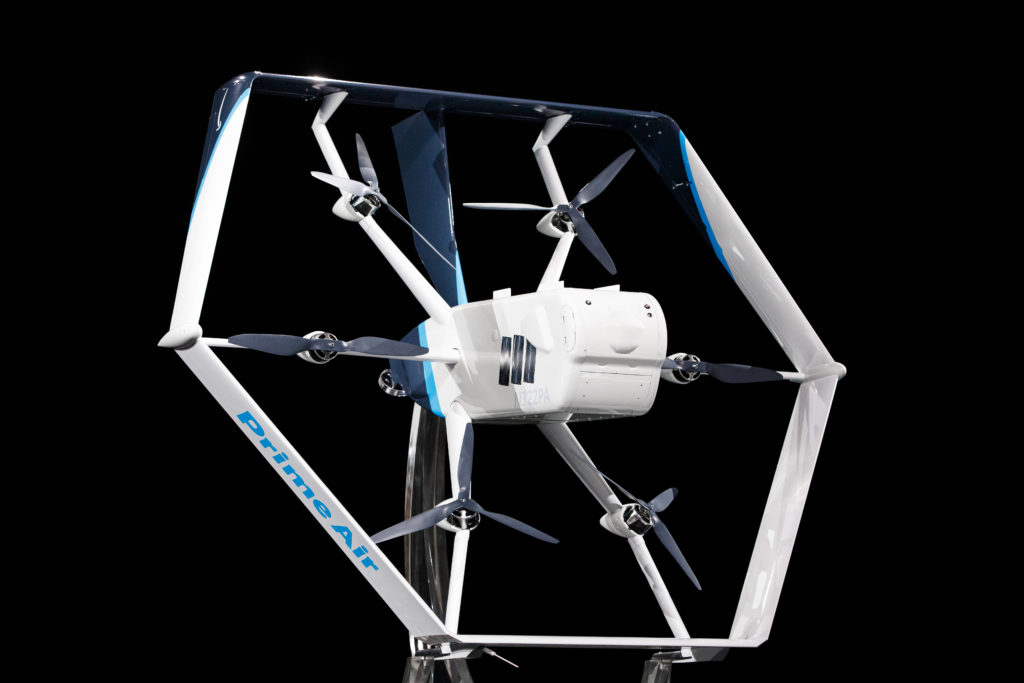Is Amazon ready to deploy drones at scale? Analysis of the regulatory hurdles and other issues that need to be overcome before the skies turn dark with drones, with Marek Różycki, Last Mile Experts and Andrew Blogg, Dronecloud
Amazon has applied for a waiver with the FAA that would allow the e-commerce giant to begin drone delivery in the US.
According to the application, Amazon’s Prime Air service would use drones capable of carrying up to 5 lb (2.25kg) to deliver parcels to customers within 30 minutes or less. This weight represents around two thirds of the parcels delivered by Amazon in the US.
While Ian Kerr, my partner in crime for PPTI articles and host of the Postal Hub Podcast, is not known to be a fan of UAVs, there is increasing interest in this form of last mile delivery. The question now is: Can it work at scale in the reasonably near future?
If we look at Amazon’s application, we can see that the drone’s flight path to the consignee would be set by Prime Air Unmanned Traffic Management based on the customer’s delivery location, the parcel weight, current environmental conditions, air traffic and airspace constraints, and take-off and landing location constraints (see diagram below).

The autonomous flight would be beyond the visual line of sight – something that has held back commercial drone operations in the US and many other places, due to current concerns about safety. Customers will need to mark the delivery location with a special marker and the drone will use its sensors to ensure the delivery area is clear. It will descend to a safe delivery height, hold in a hover position and, as long as there are no obstructions or hazards sensed, will release the package.
Andrew Blogg, co-founder of Dronecloud, a leading drone management platform for enabling commercial drone operations and deliveries, comments, “It feels as though we’ve been waiting a long time for drone deliveries to come to fruition. But this isn’t like any other industry that can simply scale up; there are global aviation regulations to develop and implement. As these mature, drone deliveries will be sure to scale up and become reality.”
Indeed, there are several reasons why drones haven’t so far been used at scale. The main ones are that most parcels are delivered in dense urban areas with heavy infrastructure that could impede safe drone flight. Difficulties are compounded by the lack of suitable landing areas, numerous no-fly zones or reliable independent and automated control over potential large numbers of drone flights. For these reasons, we believe that UAV parcel delivery at scale is still a thing of the future in urban areas.
There are, however, several use cases where drones have solved specific issues. One example is drone flights delivering medicines or other urgently needed supplies in low physical infrastructure areas of Africa and Australia, with Zipline being the most notable success story delivering blood supplies in Ghana. Another is drone delivery up difficult to access mountain areas, where the drone takes several times less time than a normal delivery vehicle. One example is DHL’s parcelcopter, which carries out fully autonomous deliveries through the winds and snow of the Bavarian Alps for customers in two mountain communities.
These examples will be followed by many more, especially in rural and perhaps some suburban areas. This could involve drone ports on parcel lockers, or courier delivery vehicles that can release several drones in the same way that Mercedes ‘mother ship’ type vans have released Starship AGVs (autonomous ground vehicles) in the past.
But to answer our earlier question – no we can’t expect drone deliveries at scale within the next 5-10 years. But as AGVs become more popular we can also expect more use of drones, especially in rural areas. So while the postie and courier will still be the norm for now, watch this space. Things will be changing.
This view is supported by Blogg: “Despite all the hype around deliveries not coming to fruition as we expected, we’re not concerned. The technology is rapidly developing and there is a huge amount of work and companies putting efforts into developing a common set of rules to integrate drone safely into the airspace. This isn’t something to be rushed, the public still needs to be onside with all this to make it work. When all these elements converge, you can be sure that in years to come drone deliveries will be bringing benefits to us all on a global scale.”
Get in touch! Do you have an opinion on when or if drones will take over the last mile delivery sector? Will Amazon lead the lead the way in this area? Join the conversation on LinkedIn by getting in touch with the authors of this article.
 Marek Różycki is managing partner at Last Mile Experts, specializing in CEP and e-commerce last-mile advisory.
Marek Różycki is managing partner at Last Mile Experts, specializing in CEP and e-commerce last-mile advisory.

Andrew is co-founder of Dronecloud, a world leading drone management platform.


